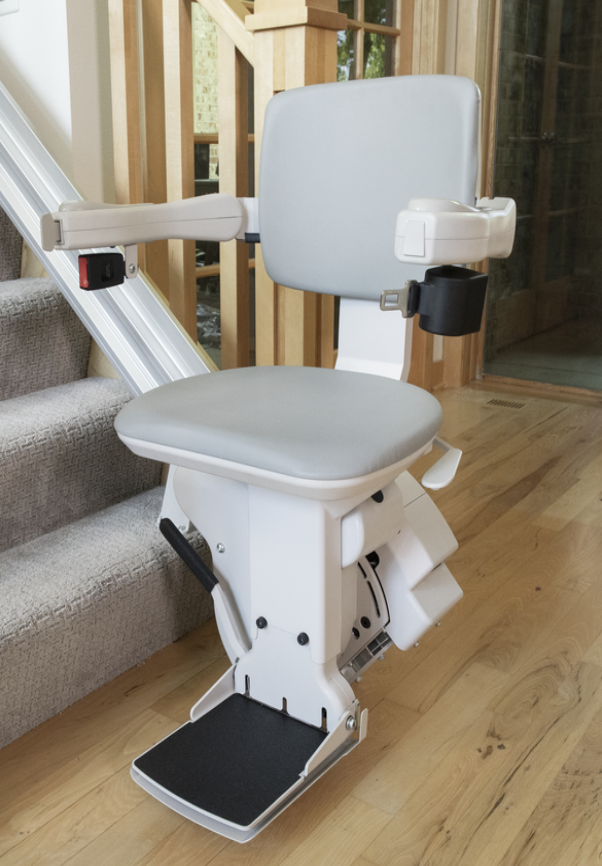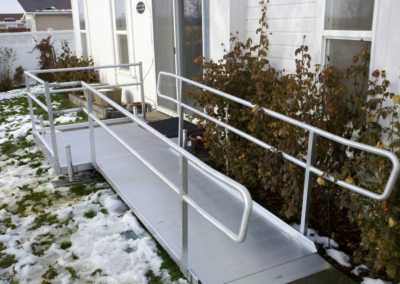Enjoy your home in comfort and safety with an EZ Able® stair lift. We offer straight & curved stair lifts feature different lifting capacities and power options, but every stair lift is hand-crafted with care for exceptional performance and dependability.
Acrylic vs. Fiberglass Bathtubs & Showers

Acrylic and fiberglass are two common materials used in the construction of bathtubs and showers.
While they both offer certain benefits, they have distinct differences in terms of durability, appearance, maintenance, and cost.
Here’s a comparison of acrylic and fiberglass bathtubs and showers:
Acrylic:
- Appearance: Acrylic surfaces have a smooth, glossy finish that can resemble porcelain or ceramic. They are available in a wide range of colors and styles, giving you more design options.
- Durability: Acrylic is generally more durable than fiberglass. It is resistant to chipping, cracking, and fading, and it can maintain its appearance over time.
- Warmth: Acrylic retains heat better than fiberglass, so the water in an acrylic bathtub tends to stay warmer for a longer period.
- Repairability: Acrylic can be repaired if it gets scratched or damaged. Repairs involve buffing out minor scratches or applying patch kits for larger damages.
- Weight: Acrylic is heavier than fiberglass, which can make installation more complex and might require extra support underneath the tub or shower.
- Maintenance: Acrylic surfaces are relatively easy to clean and maintain. They are less porous than fiberglass, which means they are less likely to accumulate dirt, stains, or soap scum.
- Cost: Acrylic tubs and showers are generally more expensive than fiberglass options. The increased cost is due to the higher durability and better overall quality.
Fiberglass:
- Appearance: Fiberglass surfaces can sometimes have a slightly less polished appearance compared to acrylic. They are often finished with a gel coat that gives a smooth but less glossy finish.
- Durability: While fiberglass is generally durable, it is more susceptible to chipping, cracking, and fading compared to acrylic.
- Warmth: Fiberglass doesn’t retain heat as effectively as acrylic, so the water in a fiberglass bathtub might cool down more quickly.
- Repairability: Small scratches or cracks in fiberglass can be repaired, but larger damages may be more challenging to fix effectively.
- Weight: Fiberglass is lighter than acrylic, making it easier to install and less likely to require additional structural support.
- Maintenance: Fiberglass can be more prone to staining and discoloration over time, as it’s more porous than acrylic. Regular cleaning and maintenance are important to keep its appearance.
- Cost: Fiberglass tubs and showers are generally more affordable than acrylic options. They are a budget-friendly choice for those looking for a lower-cost option.
EZ Able Showers offer a unique blend of the best feature of both Acrylic & Fiberglass. They’re made with a fiberglass foundation, then topped with an Acrylix finish – which makes the surface brighter, shinier and more resistance to damage. EZ Able showers come with a 30-year warranty!
In summary, acrylic tubs and showers tend to offer better durability, heat retention, and a wider range of design options, but they come at a higher cost.
Fiberglass options are more budget-friendly, lighter for installation, but may require more maintenance and are generally less durable.
Your choice between acrylic and fiberglass should depend on your budget, aesthetic preferences, and how much emphasis you place on durability and maintenance.
WHY COMPROMISE?
EZ Able Brand Showers offer the best of both Acrylic & Fiberglass
Since
Happy Customers
Join


















:max_bytes(150000):strip_icc():format(webp)/organized-kitchen-cabinet-drawers-62e8cee2-d8a60ab338e248d2b9414bc10b07afed.jpg)












